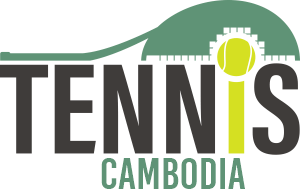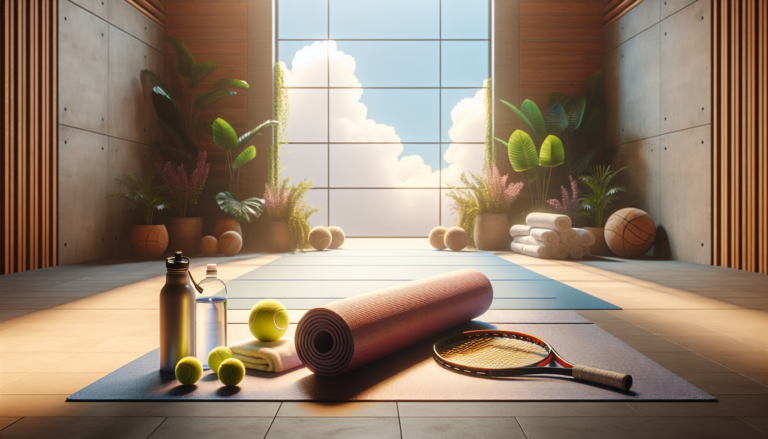Introduction to Tennis Yoga
Tennis is a physically demanding sport that requires agility, strength, and endurance. To perform at their best, tennis players need to maintain peak physical condition. One way to enhance performance and prevent injuries is through the practice of yoga. Tennis yoga combines specific yoga poses and breathing techniques to improve flexibility, balance, and core strength – all essential attributes for tennis players.
Yoga has been gaining popularity among athletes in recent years, and for good reason. Regular yoga practice can aid recovery, stretch tight muscles, and enhance tissue resiliency. It’s beneficial for athletes of all ages, from young players just starting out to seasoned professionals looking to extend their careers.
What is Tennis Yoga?
Tennis yoga is a specialized form of yoga designed specifically for tennis players. It focuses on poses and sequences that target the muscle groups and joints most used in tennis, such as the shoulders, hips, and wrists. The goal of tennis yoga is to improve flexibility, balance, and core strength, which can translate to better performance on the court and reduced risk of injury.
Tennis yoga routines often incorporate dynamic movements and fluid transitions between poses, mimicking the quick directional changes and explosive power required in tennis. Breathing techniques are also emphasized, as proper breathing can help players maintain focus and energy levels during long matches.
Benefits of Yoga for Tennis Players
The benefits of yoga for tennis players are numerous. First and foremost, yoga can greatly improve flexibility. Tennis requires a wide range of motion, from reaching for overheads to lunging for volleys. Tight muscles can limit this range of motion and lead to strains or tears. Yoga poses help lengthen and stretch the muscles, allowing for greater mobility and reducing the risk of injury.
| Benefit | Description |
|---|---|
| Flexibility | Yoga improves joint mobility and muscle lengthening, helping prevent injuries related to poor flexibility. |
| Balance | Many yoga poses challenge balance, which is crucial for quick directional changes and recovery steps in tennis. |
| Core Strength | A strong core is the foundation of powerful shots and stable movement. Yoga builds core strength through poses that engage the abs and back muscles. |
| Injury Prevention | Regular yoga practice can help prevent common tennis injuries like shoulder impingement, wrist strains, and ankle sprains. |
In addition to the physical benefits, yoga also has mental and emotional perks for tennis players. The mindfulness and breath awareness cultivated through yoga can help players stay calm and focused under pressure. Yoga’s emphasis on relaxation and stress relief can also aid in recovery between matches or training sessions.
Essential Yoga Poses for Tennis Players
While any yoga practice can be beneficial for tennis players, certain poses are particularly effective at targeting tennis-specific needs. Here are five essential yoga poses for tennis players:
Warrior Pose (Virabhadrasana I)
Warrior Pose stretches the chest, shoulders, and hips while building strength in the legs and core. This pose can help tennis players improve their lunge stance and develop the stability needed for powerful groundstrokes.
To practice Warrior Pose:
- Step one foot forward about 3-4 feet, keeping the back foot at a 45-degree angle.
- Bend the front knee to a 90-degree angle, keeping the knee in line with the ankle.
- Raise the arms overhead, reaching up through the fingertips.
- Hold for 5-10 breaths, then repeat on the other side.
Eagle Pose (Garudasana)
Eagle Pose is a balancing pose that stretches the shoulders, upper back, and hips. It can help tennis players improve their balance and coordination, which is essential for quick recovery steps and changes of direction on the court.
To practice Eagle Pose:
- Stand with feet together and arms at sides.
- Bend the knees slightly and lift the left foot, crossing it over the right thigh.
- Reach the arms out in front, then cross the right arm under the left, twisting the forearms until the palms touch.
- Hold for 5-10 breaths, then unwind and repeat on the other side.
Downward-Facing Dog (Adho Mukha Svanasana)
Downward-Facing Dog stretches the entire backside of the body, from the heels to the neck. This pose can help relieve tension in the shoulders and back, which often get tight from the repetitive overhead motion of serving. It also stretches the hamstrings and calves, helping to prevent strain and injuries.
To practice Downward-Facing Dog:
- Start on hands and knees, with hands slightly forward of the shoulders.
- Tuck the toes and lift the hips up and back, straightening the arms and legs.
- Press through the palms and heels, lengthening the spine.
- Hold for 5-10 breaths, then release back to hands and knees.
Upward-Facing Dog (Urdhva Mukha Svanasana)
Upward-Facing Dog is a backbend that opens the chest and strengthens the arms and wrists. This pose can help counteract the forward rounding of the shoulders that often occurs in tennis, promoting better posture and alignment.
To practice Upward-Facing Dog:
- Lie face down on the mat, with the tops of the feet on the floor.
- Place the palms by the lower ribs and press into the hands to lift the chest off the floor.
- Keep the legs active and the tops of the feet pressing down.
- Hold for 3-5 breaths, then release back to the mat.
Triangle Pose (Trikonasana)
Triangle Pose stretches and strengthens the legs, hips, and torso. It challenges balance and stability, which is important for tennis players who need to maintain control during wide reaches and fast-paced volleying.
To practice Triangle Pose:
- Stand with feet about 3-4 feet apart, right toes pointing forward and left toes turned out to the side.
- Extend the arms out to the sides, then reach the right hand down to the right shin or ankle.
- Lift the left arm up towards the ceiling, opening the chest.
- Hold for 5-10 breaths, then repeat on the other side.
Incorporating Yoga into Your Tennis Training
To get the most benefit from tennis yoga, it’s important to practice regularly and consistently. Even just 10-15 minutes of yoga per day can make a noticeable difference in flexibility, balance, and strength.
Creating a Yoga Routine for Tennis
When creating a yoga routine for tennis, focus on poses that target the areas of the body most used in the sport – the shoulders, wrists, hips, and legs. A well-rounded tennis yoga routine should include a mix of standing poses, balancing poses, twists, and backbends.
It’s also helpful to sequence the poses in a way that flows naturally and builds heat gradually. For example, start with some gentle stretches and warming poses like Cat-Cow or Sun Salutations. Then move into standing poses and balancing poses, followed by seated poses and twists. End with some cooling backbends and a final resting pose, such as Corpse Pose (Savasana).
Breathing Techniques and Meditation
In addition to physical poses, yoga also emphasizes breathwork (pranayama) and meditation. Learning to control and deepen the breath can help tennis players stay focused and energized during long matches. Simple breathing techniques like Ujjayi breath (victorious breath) or Nadi Shodhana (alternate nostril breathing) can be practiced on or off the court to promote relaxation and concentration.
Meditation, even just for a few minutes a day, can also have significant mental benefits for tennis players. Mindfulness meditation, which involves focusing on the present moment and observing thoughts without judgment, can help players stay calm under pressure and bounce back from mistakes more easily.
Video Resources for Guided Yoga Sessions
For tennis players new to yoga, it can be helpful to follow along with guided video sessions designed specifically for athletes. There are many online resources available, from short 10-minute routines to full-length classes.
Some popular yoga channels for athletes include:
When selecting a video to follow, look for instructors who have experience working with athletes and who emphasize proper alignment and safety. It’s also important to listen to your body and modify poses as needed to avoid strain or discomfort.
Success Stories: Top Tennis Players Who Practice Yoga
Many top professional tennis players have incorporated yoga into their training routines, crediting it with improved performance and longevity in the sport. Here are a few notable examples:
Novak Djokovic
Current world No. 1 Novak Djokovic is a vocal advocate of yoga, practicing for over a decade. He credits yoga with helping him overcome injuries and improve his flexibility and balance on the court. Djokovic even has his own line of yoga clothing and sponsors an annual ‘Yoga in the Park’ event in Belgrade.
Andy Murray
Former world No. 1 Andy Murray turned to yoga to help manage chronic back pain that threatened his career. He practices Bikram yoga, a system of 26 poses done in a heated room. Murray says yoga has helped him become more flexible and less prone to injury.
Serena Williams
23-time Grand Slam champion Serena Williams uses yoga as a foundation of her off-court training. She practices vinyasa flow and hot yoga, which she says helps keep her muscles long and lean for the explosive demands of tennis. Williams also credits yoga and meditation with improving her mental focus and resilience.
These elite players demonstrate that tennis and yoga can be a powerful combination. By incorporating yoga into their training, they’ve been able to enhance their physical and mental performance and extend their careers at the highest level of the game.
Conclusion: Enhancing Your Tennis Game with Yoga
Tennis is a physically and mentally demanding sport that requires a combination of strength, agility, and focus. By incorporating yoga into their training routines, tennis players of all levels can improve their flexibility, balance, and core strength – all essential attributes for peak performance on the court.
The benefits of yoga for tennis players are vast, from increased mobility and injury prevention to improved mental focus and stress relief. By practicing tennis-specific yoga poses and breathing techniques regularly, players can gain a competitive edge and extend their careers.
Whether you’re a beginner or a seasoned pro, adding tennis yoga to your training can help take your game to the next level. With the resources and examples provided in this guide, you have everything you need to get started on your tennis yoga journey. Namaste and play on!






